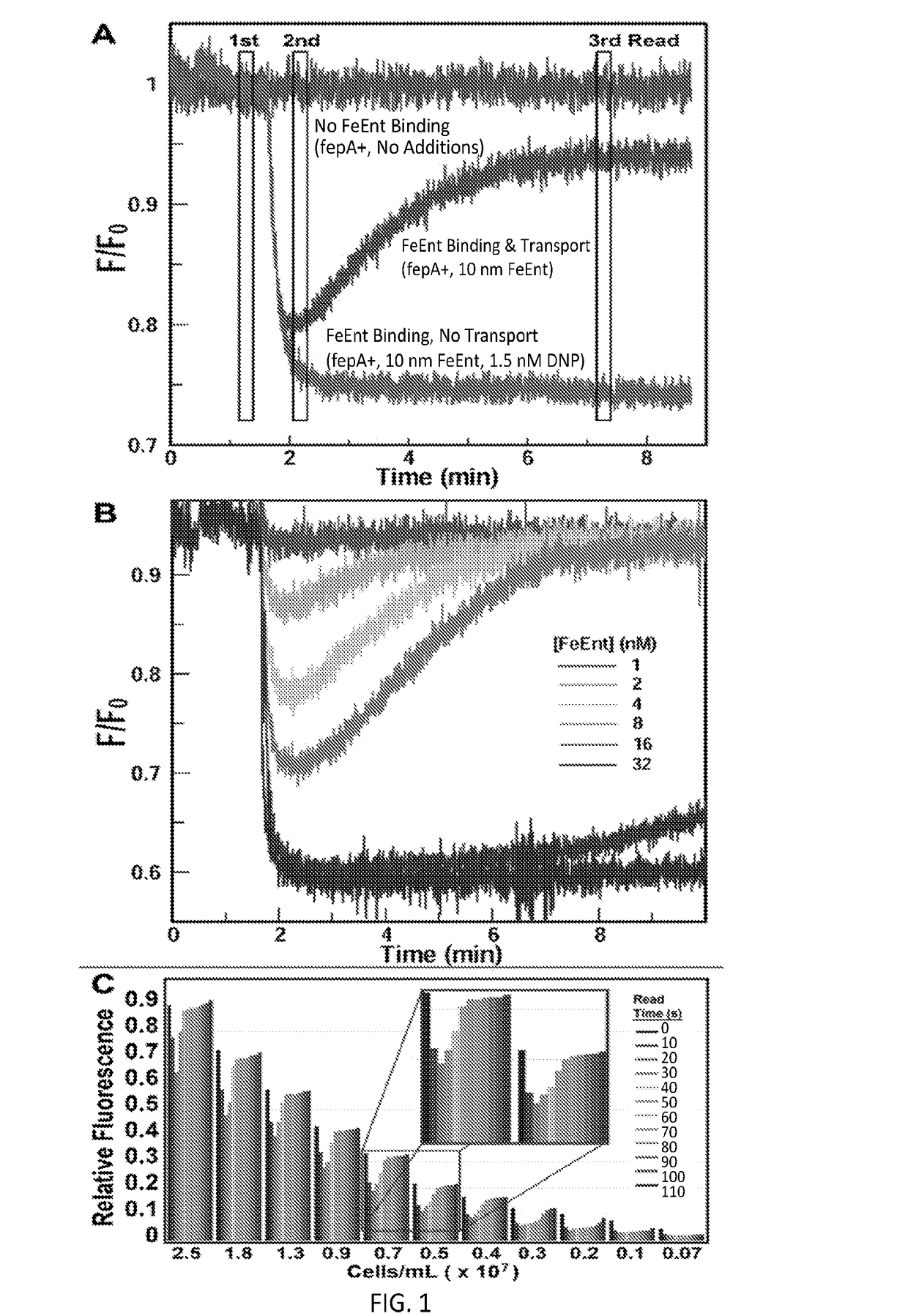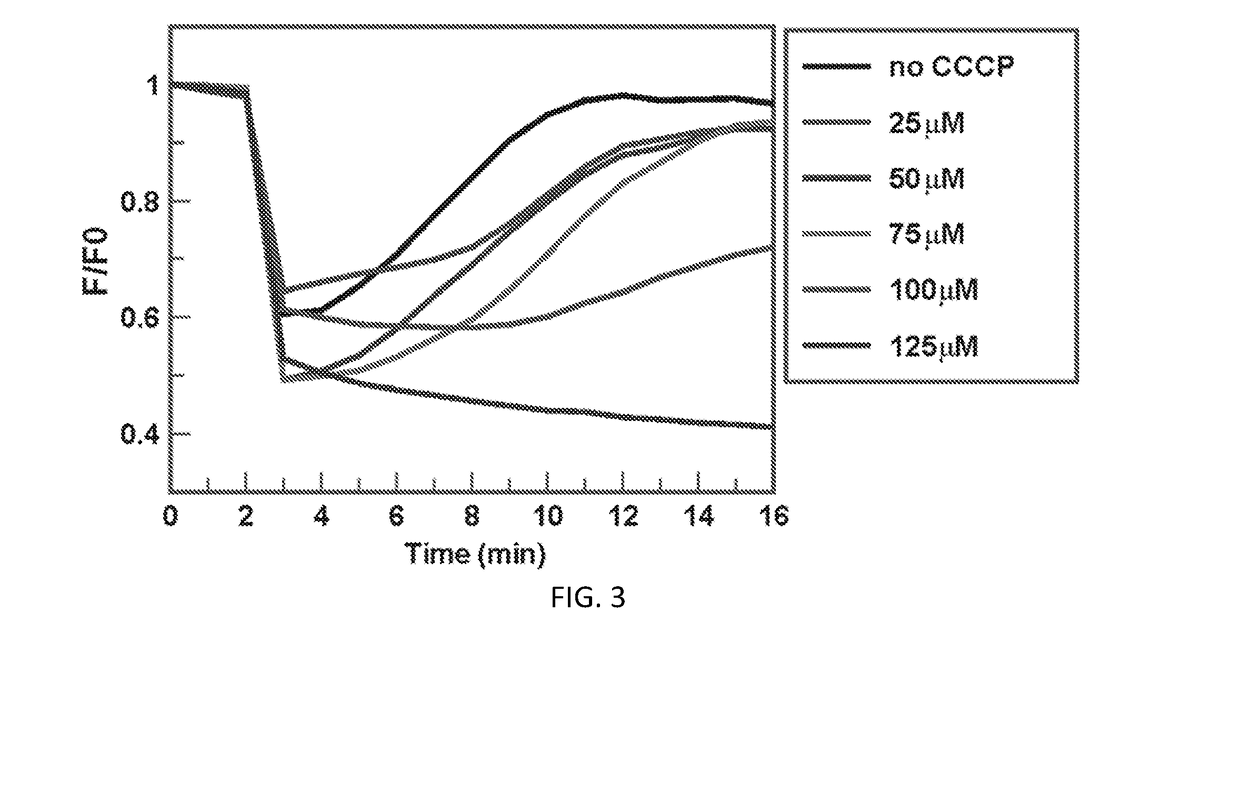High-throughput fluorescent screening assay for inhibitors of gram-negative bacterial iron uptake
- Summary
- Abstract
- Description
- Claims
- Application Information
AI Technical Summary
Benefits of technology
Problems solved by technology
Method used
Image
Examples
example 1
A High-Throughput Screening (HTS) Assay for FeEnt Uptake in Escherichia coli
[0040]In this Example, a high-throughput screening (HTS) assay was created that detects FeEnt uptake through FepA in living Escherichia coli, by monitoring fluorescence quenching that occurs upon binding of FeEnt, and then un-quenching as the bacteria deplete it from solution by transport. The TonB-dependent Gram-negative bacterial outer membrane protein FepA actively transports the siderophore ferric enterobactin (FeEnt) into the periplasm, and is engineered for these assays to provide a detectable fluorescent signal for the assay. The assay can be used to identify inhibitors that block TonB function, and would constitute novel therapeutics against infectious disease caused by Gram-negative bacteria.
A. Materials & Methods
[0041]Bacterial strains, plasmids and media. E. coli strain OKN3 (ΔfepA), which carries a precise deletion of the fepA structural gene, was the host for derivatives of the low-copy plasmid...
example 2
HTS Assay for FeEnt Uptake in Gram Negative Bacteria
[0068]In this Example, additional investigation was carried out with E. coli to continue the work described in Example 1 above. Further, the approach was validated in an additional Gram-negative bacteria, A. baumannii, to demonstrate the applicability of the assay to screening for inhibitors of TonB-dependent FeEnt transport in any Gram-negative bacteria.
A. Materials and Methods
[0069]Bacterial Strains and Reagents.
[0070]All experiments with E. coli were performed using MG1655 or BN1071 and its derivatives OKN1 (ΔtonB ΔfepA), OKN7 (ΔtonB), OKN3 (ΔfepA), OKN3+pITS23 (ΔfepA+pfepA), and OKN3+pITS23-S271C as described in Example 1 above. All experiments with Acinetobacter baumannii were performed with A. baumannii ATCC 17978 (incorporated by reference herein) or a mutant derivative (ΔfepA) generated herein. Strains were cultured in Luria broth (LB) at 37° C. with aeration and OD600 used to measure bacterial growth unless otherwise noted...
PUM
| Property | Measurement | Unit |
|---|---|---|
| total volume | aaaaa | aaaaa |
| temperature | aaaaa | aaaaa |
| volume | aaaaa | aaaaa |
Abstract
Description
Claims
Application Information
 Login to View More
Login to View More - R&D
- Intellectual Property
- Life Sciences
- Materials
- Tech Scout
- Unparalleled Data Quality
- Higher Quality Content
- 60% Fewer Hallucinations
Browse by: Latest US Patents, China's latest patents, Technical Efficacy Thesaurus, Application Domain, Technology Topic, Popular Technical Reports.
© 2025 PatSnap. All rights reserved.Legal|Privacy policy|Modern Slavery Act Transparency Statement|Sitemap|About US| Contact US: help@patsnap.com



